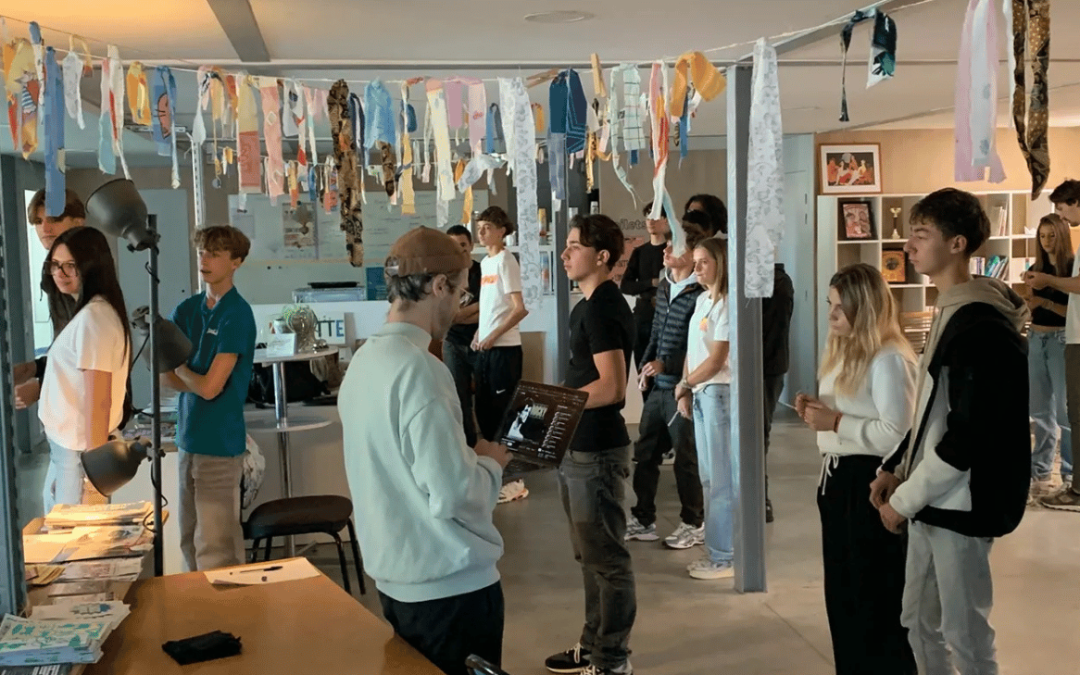
Objectif concours d’éloquence
Par Ilonka Reinoso, Radsi Nouvelle-Aquitaine
Objectif Bruxelles !
Arrivée au sein du RADSI Nouvelle-Aquitaine et déjà en action pour ODDience2030
Voilà 3 petites semaines que je suis arrivée au RADSI Nouvelle-Aquitaine en tant que chargée de mission ECSI (Education à la Citoyenneté et Solidarité Internationale), et suis déjà dans le bain pour contribuer au bon déroulement de cette dernière année du projet ODDience2030.
Je prends le relai de Clara, qui a réalisé une très grande partie des actions menées par le RADSI au sein du projet. Je la remercie à nouveau pour ce travail très bien réalisé qui me permet d’arriver avec des bases très solides et une ligne conductrice on ne peut plus claire pour l’organisation de la mobilité internationale à Bruxelles dont le temps fort sera incarné par les jeunes : un concours d’éloquence sur les ODD !
Destination Bruxelles en Avril 2026
Pour cette nouvelle mobilité, les élèves, professeurs et partenaires partiront à la rencontre de lieux et personnes liées aux espaces de décisions à l’échelle de l’Union Européenne.
Au programme : visite du Parlement Européen et de son musée, rencontres avec un député européen et représentant de la Région Nouvelle Aquitaine à Bruxelles. Nous irons également à la rencontre d’associations locales impliquées dans les domaines de la solidarités et qui elles-même intègrent les ODD dans leur démarche citoyenne.
Ces visites et rencontres seront bien sûr ponctuées de temps conviviaux pour connaître d’autres lieux d’intérêts et spécialités locales et profiter de la joie de toutes et tous se retrouver !
Vous avez dit « concours d’éloquence » ?
Pour la première fois, tous les acteurs d’ODDience2030 se retrouveront dans une atmosphère un peu différente, que je définirais comme plus solennelle. Car nous entrons dans la dernière étape du projet, et l’heure est à la restitution.
Le choix a été fait de rendre les élèves acteurs et de leur donner l’espace, le temps d’élever leur voix pour s’exprimer sur leur vision d’un monde plus juste, solidaire et durable, en s’appuyant sur leur connaissance des Objectifs du Développement Durable. C’est le défi qui leur est proposé sous forme de concours d’éloquence.
Pour les élèves, ce sera l’occasion d’incarner, par groupe de 3 ou 4, leur pouvoir d’agir en prenant la parole pour défendre leurs idées et pour les professeurs, un moyen de mesurer l’impact que tout ce travail de longue haleine aura eu sur leurs élèves.
Ce jour-là il y aura donc, un jury, un public et au centre, les élèves des 3 établissements d’Inde, du Portugal et de France qui prendront la parole collectivement. Bien que cette restitution prenne la forme de concours, l’idée n’est pas de mettre en difficulté les élèves mais bien de les ouvrir au débat, à l’opinion de l’autre, en vue de construire un dialogue durable entre jeunes citoyens de pays et continents différents.
J’œuvre à présent pour l’organisation de ce temps fort en 2026 et souhaite offrir les meilleures conditions d’accueil des participants à cette mobilité, et particulièrement des jeunes qui seront au centre de l’attention lors du concours d’éloquence.
Le compte à rebours est lancé, 5 mois pour préparer cette mobilité et ce concours : c’est parti !
















